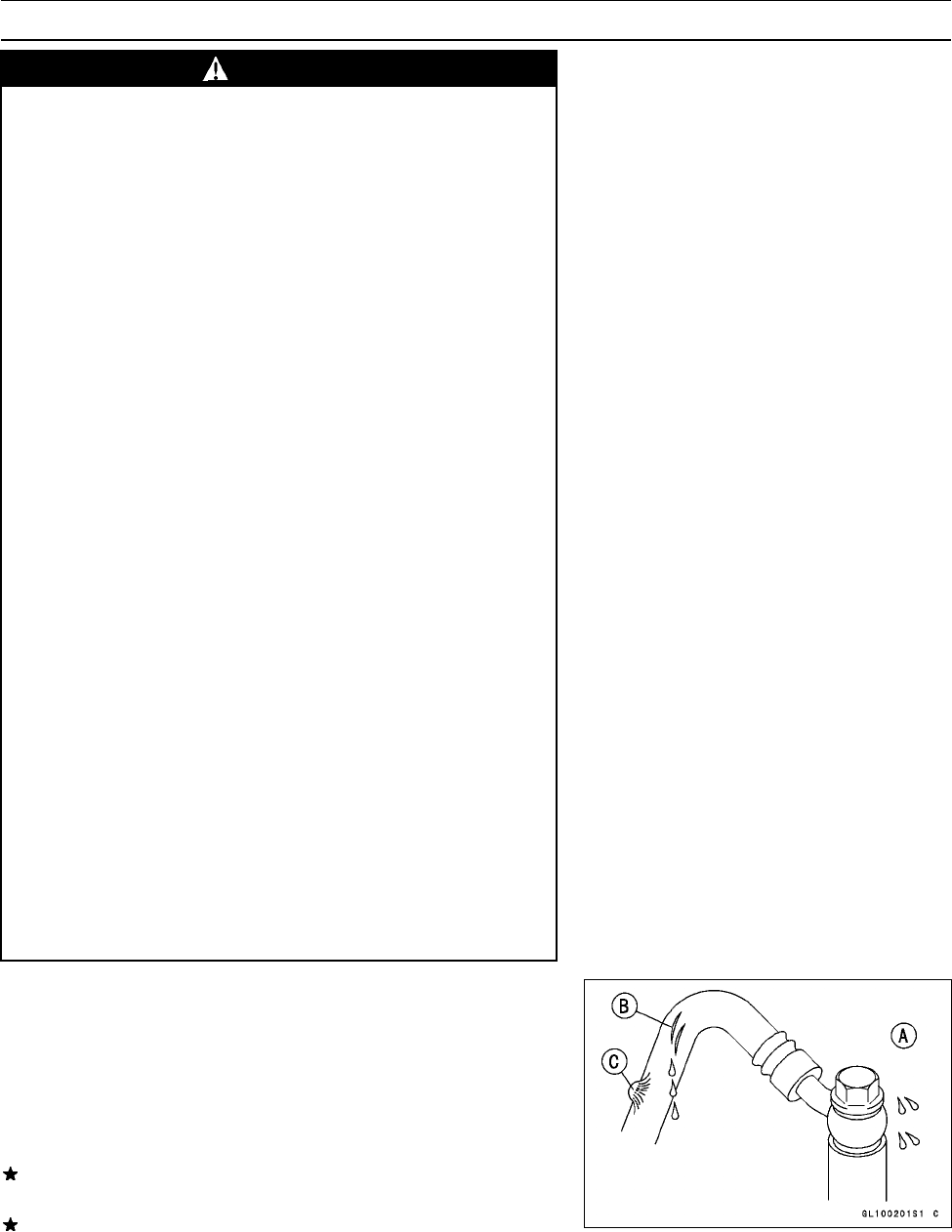
2-36 PERIODIC MAINTENANCE
Periodic Maintenance Procedures
WARNING
When working with the disc brake, observe the pre-
cautions listed below.
1. Never reuse old brake fluid.
2. Do not use fluid from a container that has been left
unsealed or that has been open for a long time.
3. Do not mix two types and brands of fluid for use in
the brake. This lowers the brake fluid boiling point
and could cause the brake to be ineffective. It may
also cause the rubber brake parts to deteriorate.
4. Don’t l eave the reservoir cap off f or any length of
time to avoid moisture contamination of the fluid.
5. Don’t change the fluid in the rain or when a strong
wind is blowing.
6. Except for the disc pads and disc, use only disc
brake fluid, isopropyl alcohol, or ethyl alcohol for
cleaning of the brake parts. Do not use any other
fluid for cleaning these parts. Gasoline, engine oil,
or any other petroleum distillate w ill cause deterio-
ration of the rubber parts. Oil spilled on any part will
be difficult to wash off completely and will eventually
deteriorate the r ubber used in the disc brake.
7. When handling the disc pads or disc, be careful t hat
no disc brake fluid or any oil gets on them. Clean off
any fluid or oil that inadvertently gets on the pads or
disc with a high-flash point solvent. Do not use one
which will leave an oily residue. Replace the pads
with new ones if they cannot be cleaned satisfacto-
rily.
8. Brake fluid quickly ruins painted surfaces; any
spilled fluid should be completely wiped up imme-
diately.
9. If any of the brake line fittings or the bleed valve is
opened at any time, the AIR MUST BE BLED FROM
THE BRAKE LINE.
Brake Hoses and Connections Inspection
•
Inspect the brake hose and fittings for deterioration,
cracks and signs of leakage.
○
Thehighpressureinsidethebrakelinecancausefluidto
leak [A] or the hose to burst if the line is not properly main-
tained. Bend and twist the rubber hose while examining
it.
Replace the hose if any cracks [B] or bulges [C] are no-
ticed.
Tighten any loose fittings.


















